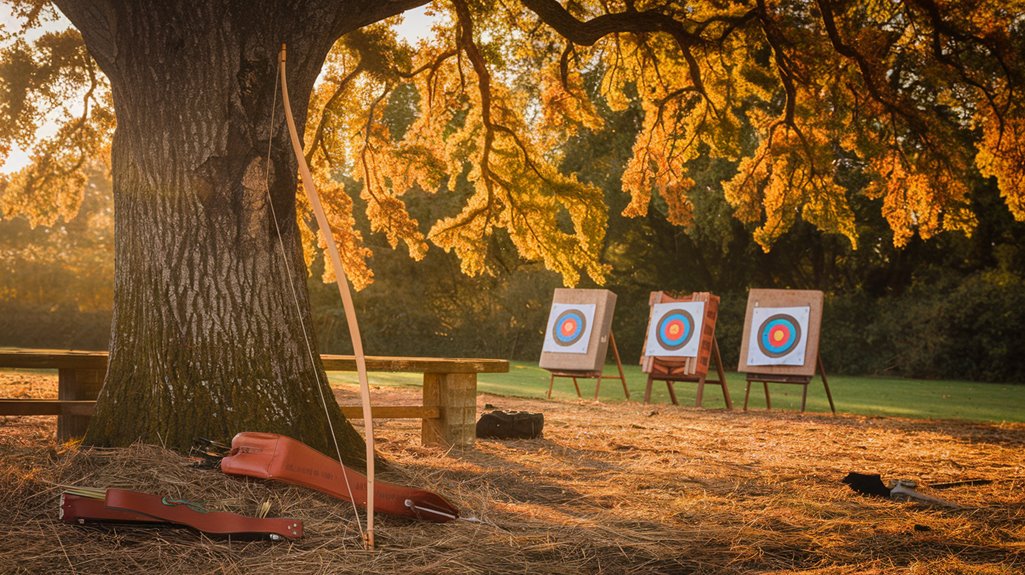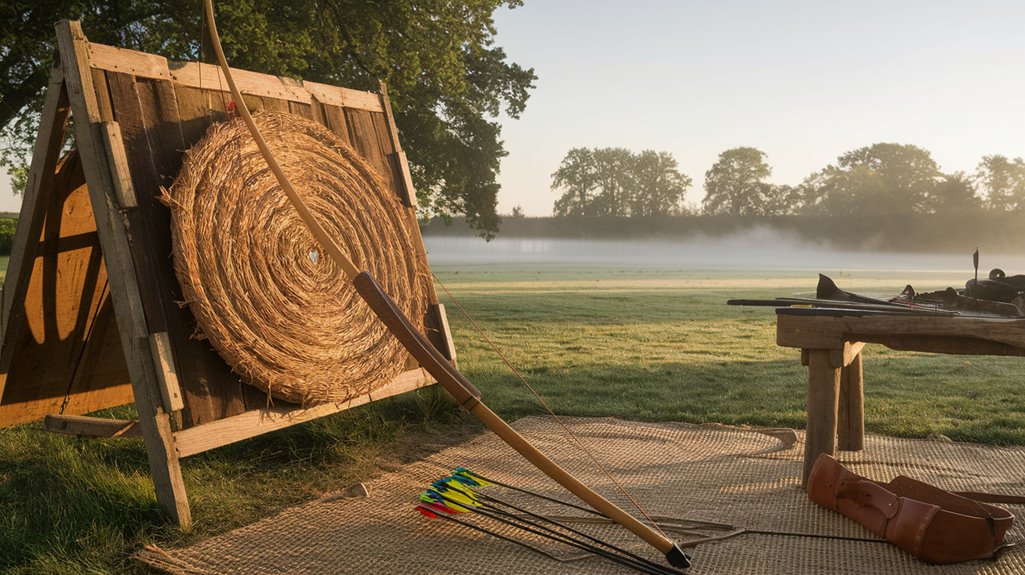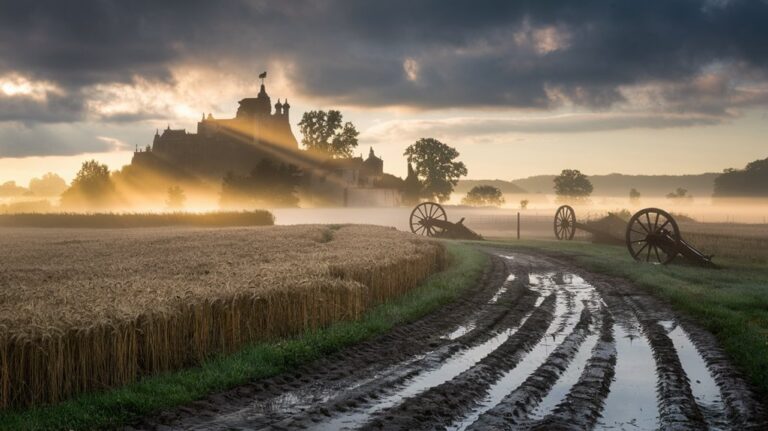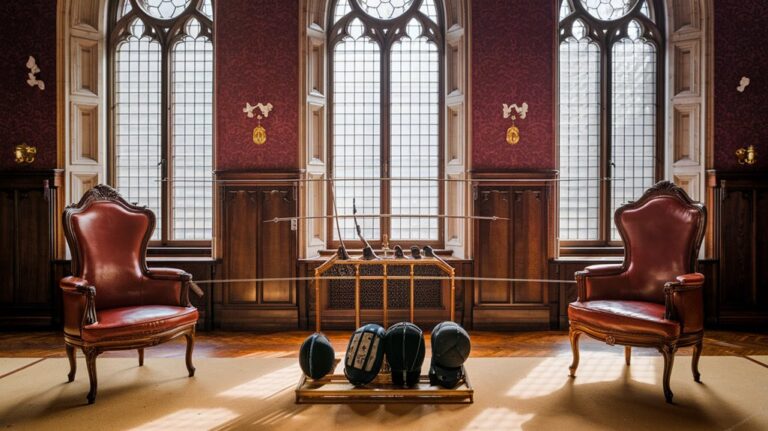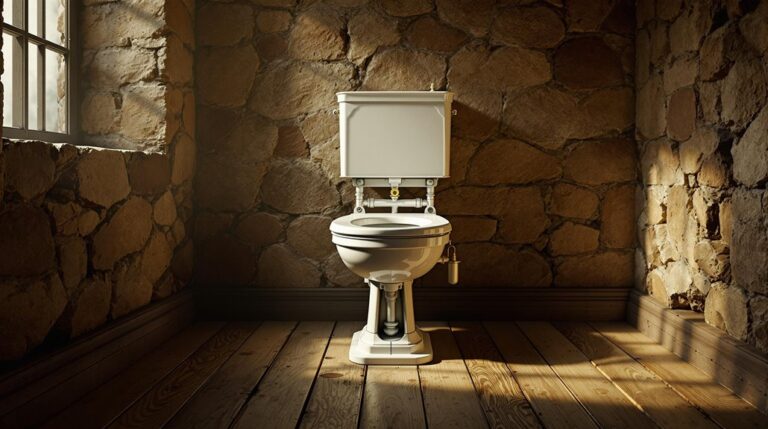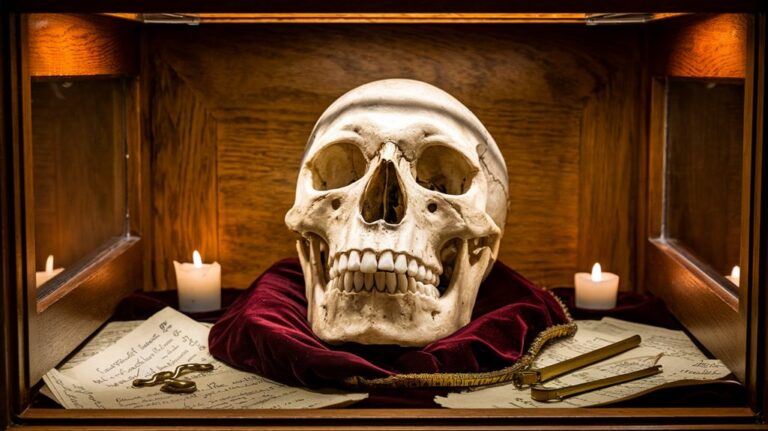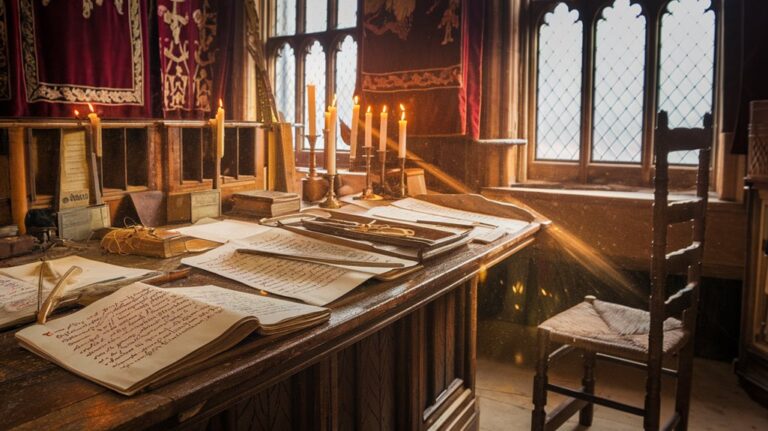Archery Was Once Mandatory by Law for English Men
You might think your weekend hobbies are your choice, but in medieval England, you wouldn't have had that luxury when it came to archery. If you were a man between 15 and 60, the law required you to own a bow and arrows and practice regularly on Sundays and holidays. It wasn't just a suggestion – it was a royal mandate that shaped England's military might and transformed its social structure. The story behind this unusual law reveals much more than just military strategy.
The Birth of England's Archery Laws
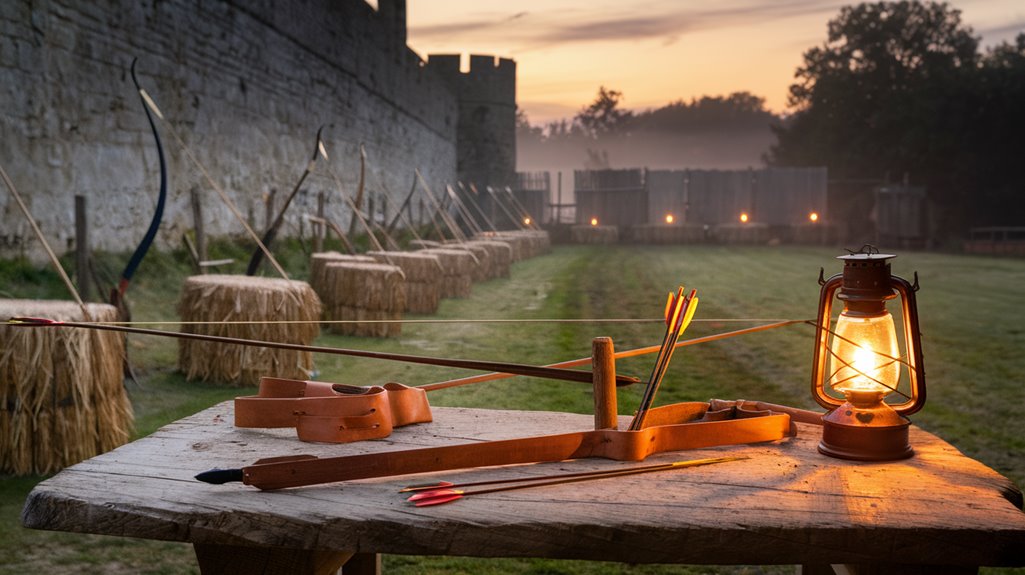
While the Romans and Anglo-Saxons first introduced archery to England, it wasn't until the 13th century that formal laws began shaping the nation's archery culture.
The archery origins can be traced through early battles like Cuton Moor, where archers proved their military worth under Henry II's command. Officers were appointed to ensure that weapons were kept battle-ready at all times.
The legal evolution started with the 1252 Assize of Arms, requiring all able-bodied men between 15 and 60 to own and master bows and arrows.
King Henry I further encouraged practice by declaring that accidental deaths during archery training wouldn't count as murder. King Edward III expanded these laws by making it mandatory for men to practice archery on holidays and Sundays.
You'll find that hunting exercises, particularly deer chasing, became popular among the upper classes, helping to establish archery as both a military necessity and a noble pursuit throughout medieval England.
Medieval Archery: Legal Requirements and Penalties
As England's military prowess grew increasingly dependent on skilled archers, a series of strict laws emerged between 1252 and 1541 to regulate archery practice and equipment ownership.
If you were a male between 15 and 60 years old, you'd have been required to own a bow and arrows, and practice regularly on Sundays and holidays.
The historical enforcement of these laws was remarkably severe.
Skilled archers were expected to shoot twelve to fifteen arrows per minute during training to maintain combat readiness.
You'd face death or imprisonment for failing to comply, and if you were a servant, your employer could garnish your wages to guarantee you maintained proper archery equipment.
You couldn't even participate in competing sports like football or handball.
The laws eventually became obsolete with the Statute Law Revision of 1863.
The only exceptions were for wealthy individuals, aristocrats, and those living in royal forests, who could practice with blunt arrows to protect the king's game.
How Archery Shaped English Military Success
The English military domination during the medieval period rested heavily on its unrivaled archery capabilities.
You'll find that England was unique among Western monarchies in developing extensive native military archery training, which proved decisive in major battles like Crécy and Agincourt. The longbow's limited range of 275 meters maximum meant archers needed expert positioning and tactical deployment to be effective. King Edward III made archery practice mandatory through new laws.
Four key factors shaped this military success:
- The Black Death created social mobility, allowing commoners to join the military.
- Disciplined infantry formations combined missile and melee tactics effectively.
- The technical superiority of the English longbow provided a strategic advantage.
- Mandatory archery practice guaranteed a steady supply of skilled bowmen.
This military system transformed England's armies, creating professional Yeoman Archers and establishing innovative military tactics that influenced warfare well into the early modern era.
The Social Revolution of Mandatory Archery Practice
Beyond its military significance, mandatory archery practice sparked a profound social transformation in medieval England. You'd find people from all walks of life gathering at archery butts, where community engagement flourished through tournaments and social events.
This democratization of military skills challenged the existing social hierarchy, as peasants who mastered the longbow could now assert power traditionally reserved for knights.
The practice wasn't just about warfare – it reshaped daily life. You were required to own specific archery equipment and practice regularly, with local authorities ensuring compliance. Under King Edward III's decree, all men were required to practice archery on Sundays and holidays without exception.
If you didn't follow these laws, you'd face fines or imprisonment. The formation of archery clubs and regular competitions elevated skilled archers' social status, creating new pathways for advancement in medieval society.
From Battlefield to Sport: The Evolution of English Archery
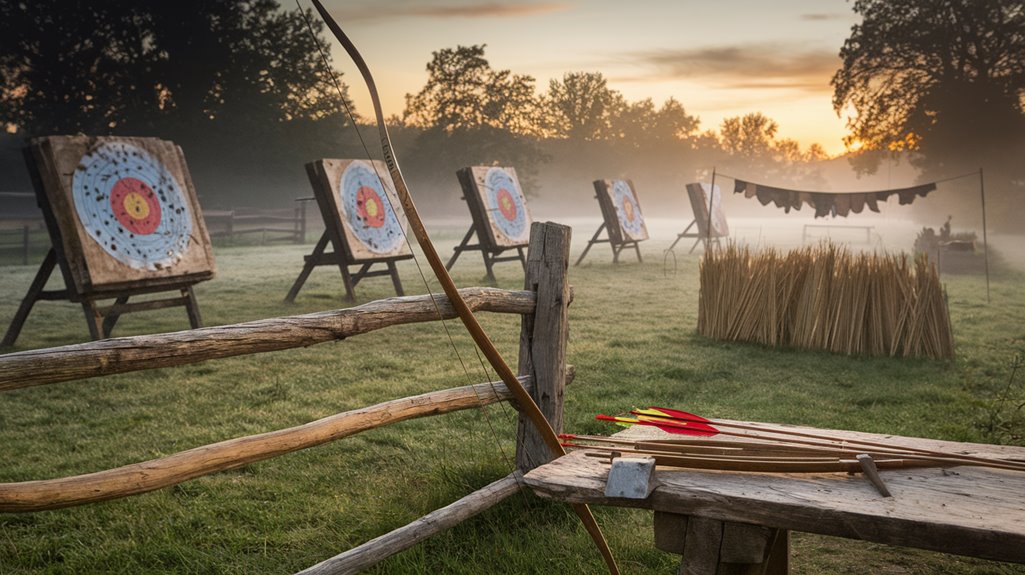
Dating back to 2690 BC in Somerset, English archery transformed from primitive hunting bows into a sophisticated military art that would dominate medieval warfare.
The historical significance of archery techniques evolved dramatically after the Norman Conquest, particularly through the Anglo-Norman invasions of Wales. Draw weights reaching up to 160 pounds made these weapons devastatingly effective in battle.
You'll find archery's remarkable evolution marked by these key developments:
- Norman archers revolutionized warfare at the Battle of Hastings in 1066 by breaching Saxon defenses with looping shots.
- Welsh archers became renowned for their powerful bows and skilled techniques by 1188.
- Edward III's reign saw archery reach its peak during the Hundred Years War.
- By the 15th century, archery shifted from warfare to sport, with societies like Kilwinning Archers (1483) preserving these traditions.
Archeological discoveries have revealed that early hunters used flint arrowheads dating back approximately 20,000 years, demonstrating the ancient origins of archery in Britain.
The Physical and Cultural Legacy of England's Bow Laws
While medieval England's military prowess relied heavily on skilled archers, you'll find that archery laws shaped more than just battlefield tactics – they fundamentally transformed English society and culture.
The mandatory practice sessions became vibrant community gatherings, where you'd see men from all walks of life honing their skills together. As archery clubs emerged, they didn't just serve military purposes but evolved into prestigious social institutions.
Even after firearms replaced the longbow on battlefields, the cultural symbolism endured. You can still witness this legacy today. Though the last archery law wasn't officially repealed until 1960, the longbow remains a powerful symbol of English identity. This stands in stark contrast to modern Britain, where crossbow ownership restrictions have become increasingly stringent.

